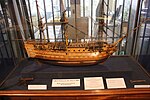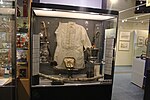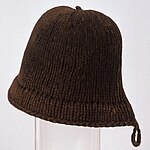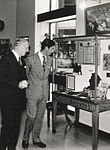 | |
 | |
| Dissolved | 2022 |
|---|---|
| Location | Market Hall, Monmouth, Wales |
| Coordinates | 51°48′47″N2°42′56″W / 51.8131°N 2.7156°W |
The Monmouth Museum, previously known as The Nelson Museum and Local History Centre, was a museum in Monmouth, Monmouthshire, south east Wales. It featured a collection of artefacts associated with Admiral Horatio Nelson, and a local history collection. The museum was located in the Market Hall in the town centre. It was closed during the COVID-19 pandemic in the United Kingdom and did not re-open thereafter. In 2021 Monmouthshire County Council announced plans to move the museum collection to the Shire Hall in Agincourt Square. The five-year project, supported by the National Lottery Heritage Fund, will see a new museum open at the Shire Hall by 2027. The Market Hall site will be let as commercial premises.




